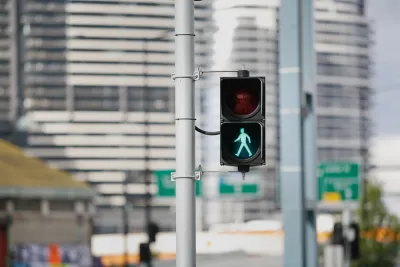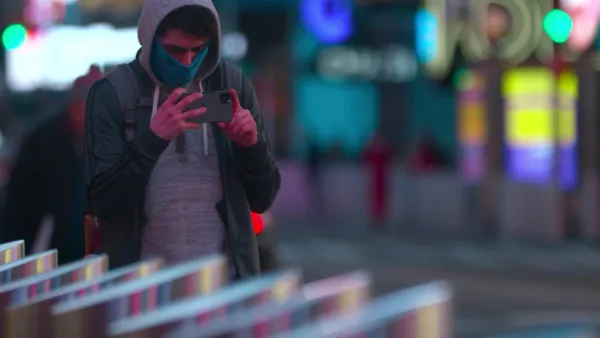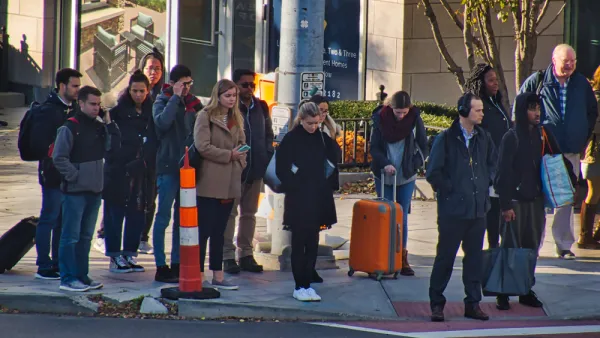The consequences of historic redlining continue to have consequences in the present day United States. Add another example to the list.

A study recently published by the American Journal of Public Health connects the discriminatory real estate practices of U.S. history to the poor pedestrian safety outcomes of contemporary life. “Historical redlining policy, initiated in the 1930s, has an impact on present-day transportation inequities in the United States,” reads the conclusion shared in the study’s abstract.
Kea Wilson picked up news of the study for Streetsblog USA, boosting the signal on the troubling findings of the report, several months after the study’s November publication. “[R]esearchers found that census tracts once marked as ‘hazardous’ or ‘grade D’ by the Home Owners’ Loan Corporation experienced a pedestrian death rate of 2.6 per 100,000 people between 2010 and 2019, compared to a rate of just 1.1 during the same period for tracts marked grade ‘A’ or ‘best,” according to Wilson’s summary of the study’s findings.
“The researchers stress that this simple and deeply racist policy helped ‘cement the racial wealth gap, that endures to this day, and remains associated with a cascade of unjust and deadly intergenerational impacts that have endured as well,” explains Wilson. Add pedestrian safety to the list that includes other contemporary public health risks, such as Covid spread, Covid fatalities, food insecurity, oil and gas facilities, air pollution, extreme heat, and housing inequality.
FULL STORY: Study: Pedestrian Death Rate More Than 2x Higher in Historically Red-Lined Neighborhoods

Analysis: Cybertruck Fatality Rate Far Exceeds That of Ford Pinto
The Tesla Cybertruck was recalled seven times last year.

National Parks Layoffs Will Cause Communities to Lose Billions
Thousands of essential park workers were laid off this week, just before the busy spring break season.

Retro-silient?: America’s First “Eco-burb,” The Woodlands Turns 50
A master-planned community north of Houston offers lessons on green infrastructure and resilient design, but falls short of its founder’s lofty affordability and walkability goals.

Test News Post 1
This is a summary

Analysis: Cybertruck Fatality Rate Far Exceeds That of Ford Pinto
The Tesla Cybertruck was recalled seven times last year.

Test News Headline 46
Test for the image on the front page.
Urban Design for Planners 1: Software Tools
This six-course series explores essential urban design concepts using open source software and equips planners with the tools they need to participate fully in the urban design process.
Planning for Universal Design
Learn the tools for implementing Universal Design in planning regulations.
EMC Planning Group, Inc.
Planetizen
Planetizen
Mpact (formerly Rail~Volution)
Great Falls Development Authority, Inc.
HUDs Office of Policy Development and Research
NYU Wagner Graduate School of Public Service




























